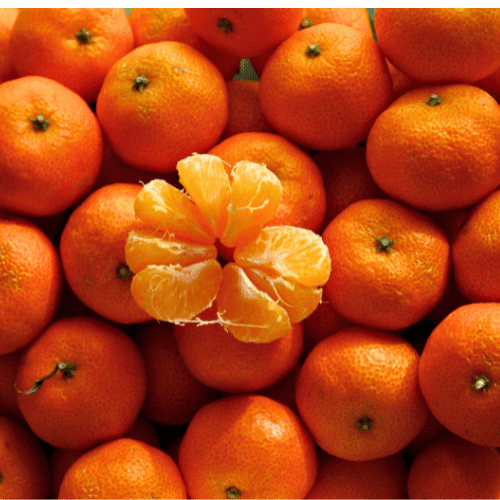Position:
The Tango naartjie tree does well in cooler conditions and grows in many SA areas. They thrive in full sun but do not like extreme frost. Plant them about 3 metres away from other trees.
Size:
This tree reaches a mature height of 3-4 metres.
Soil Type:
Because citrus trees’ roots require more oxygen than other trees, it’s important to plant them in well-draining soil that stays moist but does not become waterlogged. A pH of between 6.0 and 7.0 is ideal.
Mulch:
Use from 2 to 5 centimetres of pine bark mulch to protect the roots from UV damage and drying out. It retains moisture, and maintains an optimal pH. Do not let the mulch touch the plant stem, as it may cause infection or rot.
Watering:
Water this tree once every 10 to 14 days in summer and every 2 to 3 weeks in winter for about 45 minutes if the top 2.5 to 5 centimetres of the soil is dry. Generally, they thrive when they are flooded with water and then allowed to dry out completely before the next watering. Never overwater your Dwarf Tango Naartjie Tree.
Fertilising:
Give your citrus trees the best chance to flourish by fertilising them well. Apply slow-release citrus fertiliser, or use our slow-release fertiliser which is extremely beneficial for citrus trees; even though it is called berry fertiliser it is used for all plants/trees.
Pruning:
As with all citrus trees, the Tango Naartjies can be left to grow without much pruning. If branches are diseased or dead, getting in the way of a pathway, those can be cut away.
Harvesting:
Pick your gorgeous, sweet naartjies from May to August, when their skins are orange with no green on them.
Pests & Disease:
It’s good to know that this plant is drought-tolerant and can easily adapt to various soil and weather conditions. Additionally, you won’t need to use chemicals to protect it from pests or diseases, making it a hassle-free option for anyone. Citrus trees are susceptible to aphids, red spider, and mildew. We recommend Effective Microorganisms to prevent the spread of these pests and diseases. It is organic and more affordable than most other products. Spray the tree down harshly with a hose to remove the insects, then spray the leaves and stem with Agricultural Neem Oil or Effective Microbials (EM Control )
These diluted products should be used within 8 hours, pour onto the soil for extra protection.






